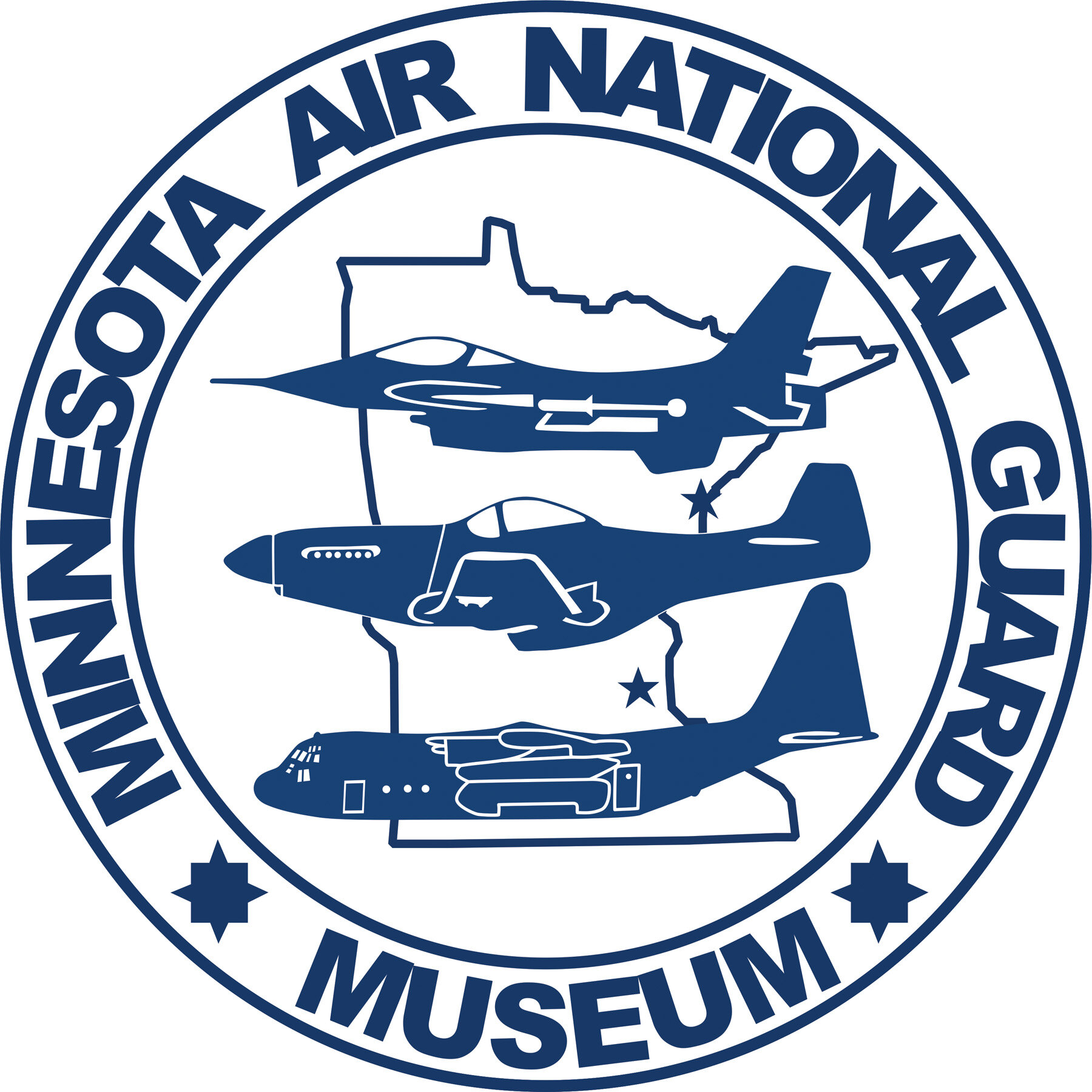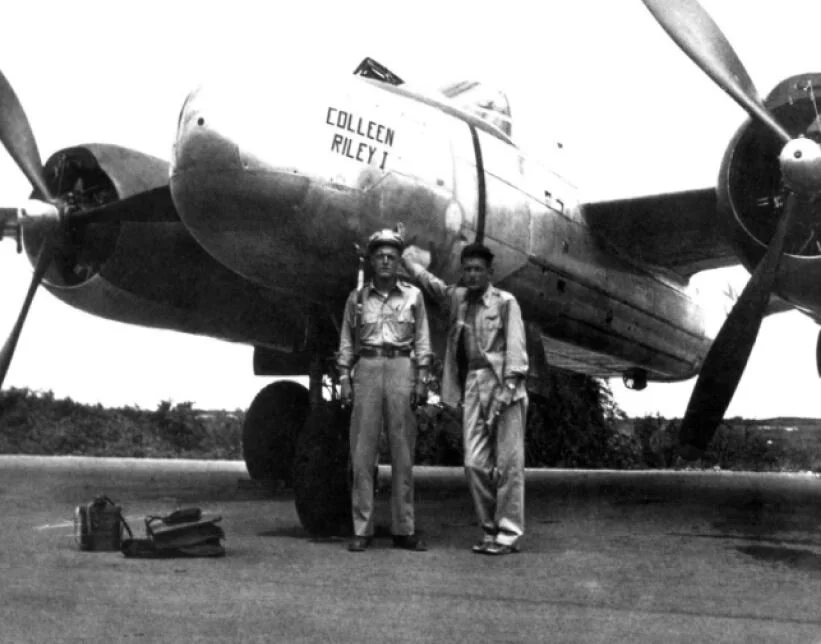Reconnaissance and Fighters and Interceptor
1943-1960
MN AIRMEN HELP TURN THE TIDE OF WWII
In the first years of World War II, the 109th flew many reconnaissance missions over Western Europe as part of the 67th Observation Group. They gathered information about the weather, the location of targets, and the results of bombing missions. The risky missions took place over enemy-occupied territory while incurring enemy fire.
D-Day - June 6th, 1944 - was the largest seaborne invasion in human history and a major turning point in WWII. Over 5,000 Allied boats carrying 160,000 American, British, and Canadian soldiers, 450,000 tons of ammunition and 7 million tons of supplies, along with 13,000 Allied aircraft overhead, were to cross the English Channel and land in Nazi-occupied France. The night before, over 24,000 airborne troops parachuted in under cover of darkness to distract and confuse the enemy and aid the invasion forces.
But where should they land? Hitler’s 2000-mile Atlantic Wall now fortified almost the entire European coastline, from southern France all the way to the northern tip of Norway. Artillery and machine gun positions protected by thick concrete bunkers, countless anti-aircraft (AA) guns, ingenious beach obstacles, millions of land and sea mines, and much more lay in wait for the Allied advance. Finding the weak spots would change the course of history and save countless lives.
That’s where the Minnesota 109th came in.
Risking it all for a photograph
As an Observation Squadron, one of the 109th's most important jobs was aerial photography. Years of intensive training served them well during World War II.
Flying solo behind enemy lines, the pilots of the 109th Tactical Reconnaissance Squadron risked their lives again and again to get the aerial intelligence the war effort so desperately needed. Long before GPS was invented, they relied on their compass and map to find their designated targets. All the while facing danger from all sides. Being the only aircraft in the sky makes you the sole focus of any AA gun or Luftwaffe (German air force) patrols you’ll encounter. Most, if not all, of the recon planes had no weaponry besides the handgun the pilot carried. Evasion was your best hope.
Once you’ve managed to get eyes on your mission goal and hopefully good pictures, the return flight home has its own hazards. Modern conveniences like a radio homing beam did not exist yet and would be disastrous to use in a time of war. They could easily be used by enemy bombers who could then attack the airbase in any weather. Speaking of, weather conditions can change without warning and often did, leaving pilots far off course and at risk of running out of fuel. Taking off in perfectly blue skies had no bearing on what storms you could encounter many hours later on your way back.
Every mission the 109th flew posed unique challenges and dangers. They faced them all bravely because they knew the intelligence, they were gathering could make all the difference.
A CRUCIAL PART OF ALLIED SUCCESS
The reconnaissance missions flown by the 109th, providing aerial photography and air intelligence, were critical in shifting the tide of the war in Europe. Their missions included seeking out ground targets, damage assessment of fighter-bomber sweeps, support of the strategic bombing missions on the European mainland, and frequent weather reconnaissance.
Days after the Japanese attack at Pearl Harbor, the 109th swung into action, relocating to Savannah, Georgia to provide reconnaissance over the Gulf of Mexico, watching for submarines and wary of another Japanese attack. Under the command of Col. George W. Peck’s 67th Observation Group, the 109th soon began their training for war in the European Theater and by late 1942 were stationed at Membury Royal Air Force Base, 75 miles west of London.
One the most important missions the 109th and the entire 67th Observation Group undertook was the reconnaissance of the Nazi fortifications along the entire 2,000-mile European coastline – known as Hitler’s Atlantic Wall. These dangerous recon flights were desperately needed to find the weak spots in the German defenses.
The location of the D-Day invasion was a closely, and quite successfully, guarded secret. Those specific beaches along a 50-mile stretch at Normandy were chosen based on the photos and reports brought back by the brave pilots of the 109th. Once the invasion was underway, their efforts continued with flight missions behind enemy lines to spot supply routes and troop movements. The 109th lost 5 pilots on D-Day
OPERATION CROSS BOW
Another famous mission for the 109th was the aerial reconnaissance for Operation Noball, part of Operation Crossbow. The 109th was tasked to bring back photographs of Germany's highly-protected and well camouflaged rocket factories, launching platforms, and control buildings used to fire V2 rockets and other explosive, pilotless aircraft against England. As a result of the unit's efforts, 9th Air Force was able to attack these sites successfully, putting a stop to Hitler's secret weapon and ending the daily terror for British civilians.
ALWAYS PUSHING FORWARD
Throughout the rest of the war, the 109th Tactical Reconnaissance Squadron kept moving forward as new airstrips were secured, providing Allied Command with a treasure trove of information only available from the air. These air bases included: La Mele, France; Buc, near Paris; Gosselies, Belgium; Limburg, Germany; and finally Eschwege Field, just over 200 miles from Berlin.
All told, the 109th flew 1,680 combat missions and were well-decorated for their valiant efforts. In recognition of its contributions, the entire squadron was awarded a Unit Citation. Its aircrews also amassed a total of 53 Air Medals with 295 bronze clusters and 43 silver clusters, 13 Distinguished Flying Crosses and one Silver Star. Finally, ten of the aircraft maintenance men also received Bronze Star Medals for their outstanding performance.
“The brilliant achievement of the 67th Tactical Reconnaissance Group in providing these indispensable photographs was a significant factor in the successful invasion of the Continent.”
—Headquarters Ninth Air Force | Citation for Outstanding Service | General Orders No. 14, January 22, 1945







